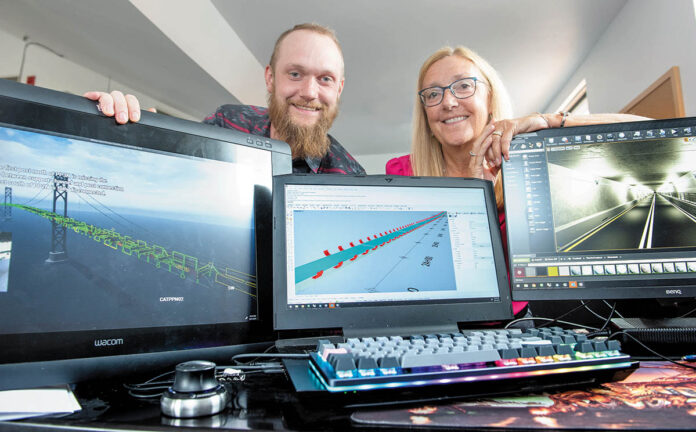
2019 PBN Innovative Companies: Architecture, Construction & Engineering
Steere Engineering Inc.
STEERE ENGINEERING INC. has a way to manage bridges via 3D virtual reality. Before stepping foot on the span, they can teleport there and see it in real time, with data on its known defects, inspection reports and more.
The technology started at Steere in 2012 but has advanced over time, with the Warwick firm advancing its applications right along with it, said President Patricia Steere.
Steere’s son Thomas, a specialist in 3D computer-aided design, developed a way to make the technology user-friendly for client agencies. A gamer, he used the 3D-VR technology and saw its potential in civil engineering. “He’s kind of brought along the discussion of, ‘What else can we do with it?’ in constantly learning and researching what’s available,” said Steere.
Three years ago, the firm started looking into “intelligent” models – adding data – and showed it to Rhode Island Turnpike and Bridge Authority officials, who liked what they saw. The 3D-VR technology was used for a model of Mount Hope Bridge, which the bridge authority oversees. The Mass. Department of Transportation is also using it for a model of the Sumner Tunnel in Boston.
Using the data to track patterns in bridge maintenance brings with it time- and money-saving potential. Steere said it shows bridges in a new way, with their issues, such as corrosion, more front and center. “Rather than keep repairing certain areas, we can consider what we can do from a management standpoint to not need these repairs,” she said.
Valuable in traffic-diversion planning for bridgework, there are features showing the span in various lighting and weather conditions.
Smart modeling is a bridge-maintenance safety tool as well, said Steere. “They can see where it is, what kind of space they have to work within and what they are working on,” she said.
Steere Engineering showcased the service at the International Bridge Tunnel and Turnpike Association’s Maintenance and Roadway Operations Workshop in Norfolk, Va., in June. Its goal is to introduce the technology to public agencies nationwide.











